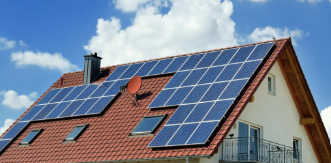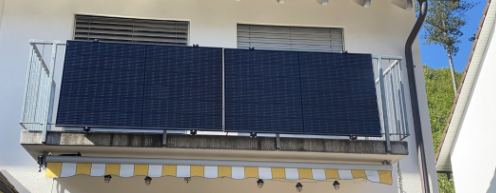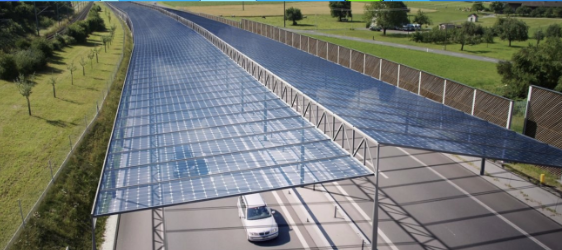Solar energy
All energy on Earth comes from the sun!
There are some exceptions, like the decay of atoms in a nuclear reaction or the energy that moves the tides, but all other energy has its origin in the sun. Even fossil fuels were once living plants and animals that stored CO2 in their cells when they grew. Under enormous pressure and long periods of time they transformed into oil, coal and gas.

Source picture: IBC Solar realisiert größtes Einzelprojekt in Indien – pv magazine Deutschland (pv-magazine.de)
But energy directly from the sun is a different story. As long as the sun will shine (and that will be billions of years), it is almost free and 100% renewable. You can feel it as warmth on your skin -- or use it as electricity when it has been transformed through solar panels (also called photovoltaic panels).



How are photovoltaics already used?
Photovoltaics, or solar energy technology, has been increasingly utilized in Europe as a sustainable and renewable energy source. Many countries in Europe have set ambitious goals for increasing the use of solar power to reduce carbon emissions and combat climate change. Germany, for example, has been a leader in solar energy adoption with its strong support for solar incentives and policies. Other countries like Spain, Italy, and the Netherlands have also seen significant growth in their solar energy capacity in recent years. Overall, the future looks bright for photovoltaics in Europe as the continent continues to transition towards cleaner and greener energy sources. At the same time, countries like China, the USA and India increasingly use the potential of photovoltaic systems as a cheap green way to boost economic development.

The scope of utilizing photovoltaic systems is wide: while ground mounted systems, such as the one depicted above, can take over the roles previously taken by fossil power plants, smaller photovoltaic systems take over an increasingly important role in decarbonizing households and decentralizing the energy system. Today, photovoltaic systems are placed on rooftops, mounted to balconies in apartments, or even integrated into the structure of houses. In addition, photovoltaic systems can help to adapt to climate change, either as so called agro-PV systems, spending shade for crops or cattle, or as part of mobility infrastructure shading bicycle lanes or even highways.

Will there be further developments?
With new inventions, such as ultra-thin photovoltaic foils or varnish, the development is far from over, and we can expect to see its usage spread to ever more field. Examples for this today are the first cars and buses that are equipped with photovoltaic roofs in order to charge their batteries while driving (or standing) in the sun.
